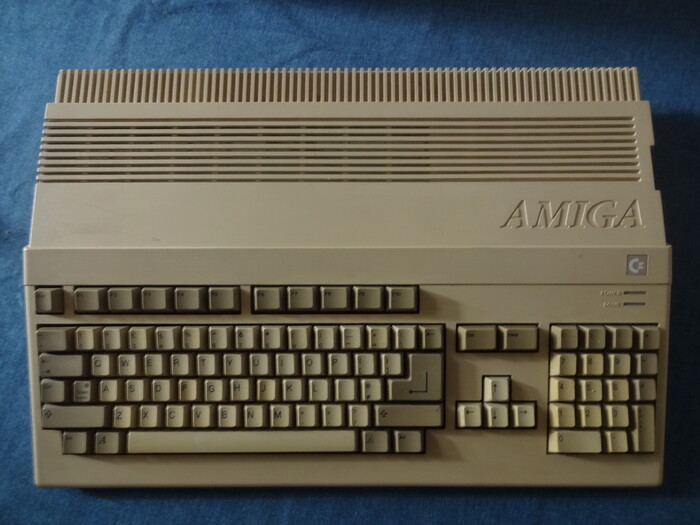# Deep Disco
# 1 Concept
White noise has equal energy per frequency. It is easy to generate with a computer: make a stream of uncorrelated pseudo-random numbers, much like throwing dice repeatedly.
Pink noise has equal energy per octave. It can be generated on a computer by adding together many white noise streams at different speeds: one for each octave of the output.
Real noises are neither white not pink. Deep Disco modifies the Voss-Clarke-Gardner-McCartney pink noise algorithm to set the energy of each of 9 octaves individually. The audio output’s “unpink” noise is itself controlled by 9 other unpink noise generators at subsonic frequencies, each of which is controlled by another 9. Correlations between the octaves are also controlled, altogether over 1000 parameters that are chosen by the artist.
# 2 Implementation
The Amiga is a family of personal computers introduced by Commodore in 1985. Based on the Motorola 68000 microprocessor, the Amiga includes custom hardware to accelerate graphics and sound. The best-selling Amiga 500 (1987) sold four to six million units in the late 1980s and early 1990s. The sound chip, named Paula, supports four 8-bit PCM sound channels.
Deep Disco runs on original Amiga hardware. It was developed in the C programming language with the VBCC compiler on Debian Linux (using the FS-UAE emulator for testing). To transfer the program to the old hardware, custom networking software was written in C (Linux side) and Blitz Basic 2 (Amiga side) that uses the MIDI SysEx protocol for data exchange.
# 3 Download
Amiga DiskMasher archive: DeepDisco.dms (sig)
For Amiga, see https://aminet.net/package/util/arc/dms111. For Linux,
you can use xdms to convert DMS to ADF and unadf to extract files
from ADF.
# 4 Usage
Build the programs for Linux:
make
Analyze audio to make a preset:
./invert preset.deepdisco a.wav b.wav c.wav ...
Optimize the preset gains:
./debug preset.deepdisco preset.deepdisco > preset.dat
Visualize the preset:
./vis preset.deepdisco > preset.svg
Generate sound with SDL2:
./deepdisco-sdl2 preset.deepdisco
Generate sound with JACK:
./deepdisco-jack preset.deepdisco
Build the program on Linux for AmigaOS using VBCC cross-compiler:
make amiga
Generate sound on Amiga:
DeepDisco68000 preset.deepdisco
# 5 See Also
Part of the artist’s disco project for audio fingerprint discrimination and resynthesis.
# 6 Legal
Copyright (C) 2021 Claude Heiland-Allen
Copyleft: This is a free work, you can copy, distribute, and modify it under the terms of the Free Art License http://artlibre.org/licence/lal/en/
# 7 References
-
Richard F. Voss and John Clarke, 1/f noise in music: Music from 1/f noise, The Journal of the Acoustical Society of America 63 258 (1978) https://doi.org/10.1121/1.381721
-
Martin Gardner, Mathematical Games: White and brown music, fractal curves and 1/f fluctuations, Scientific American 238 4 pp.16-33 (April 1978) http://www.jstor.org/stable/24955701
-
Martin Gardner, White, Brown, and Fractal Music in Fractal Music, Hypercards, and More: Mathematical Recreations from Scientific American Magazine, W. H. Freeman (1991), ISBN 0716721880, 9780716721888
-
James McCartney, noise generation in music-dsp mailing list (2nd September 1999) https://music.columbia.edu/pipermail/music-dsp/1999-September/035431.html
